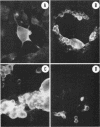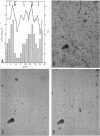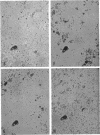Abstract
Hampar, Berge (National Institute of Dental Research, Bethesda, Md.). Persistent cyclic herpes simplex virus infection in vitro. III. Asynchrony in the progression of infection and cell regrowth. J. Bacteriol. 91:1965–1970. 1966.—The progression of virus-induced cytopathic effects (CPE) and virus synthesis was studied in localized areas of Chinese hamster cell cultures persistently infected with herpes simplex virus (HSV). CPE was initially evidenced by the presence of small multinucleated giant cells, followed by expanding plaquelike lesions with an occasional uninfected cell remaining within the infected areas. Cell detachment rapidly followed the appearance of viral antigen in infected cells. The surviving cells which proliferated to re-establish the cell sheet arose from two sources. The first was from viable cells which remained attached after expansion of localized areas of CPE, and the second was from reattachment of viable cells in the medium. CPE in localized areas was initiated at various times during the cycle irrespective of the virus titer in the medium. Cell regrowth in some areas and CPE in other areas occurred simultaneously throughout the cycle in an asynchronous fashion. Consequently, during periods of rising virus titers, most areas showed CPE while few areas displayed cell regrowth. As the virus titers declined, more areas showed cell regrowth and fewer areas displayed new cycles of CPE. CPE in localized areas was not initiated until cell regrowth had occurred. It is proposed that the proliferating cells were temporarily resistant to HSV infection, and that this resistance was ultimately lost in their progeny cells.
Full text
PDF

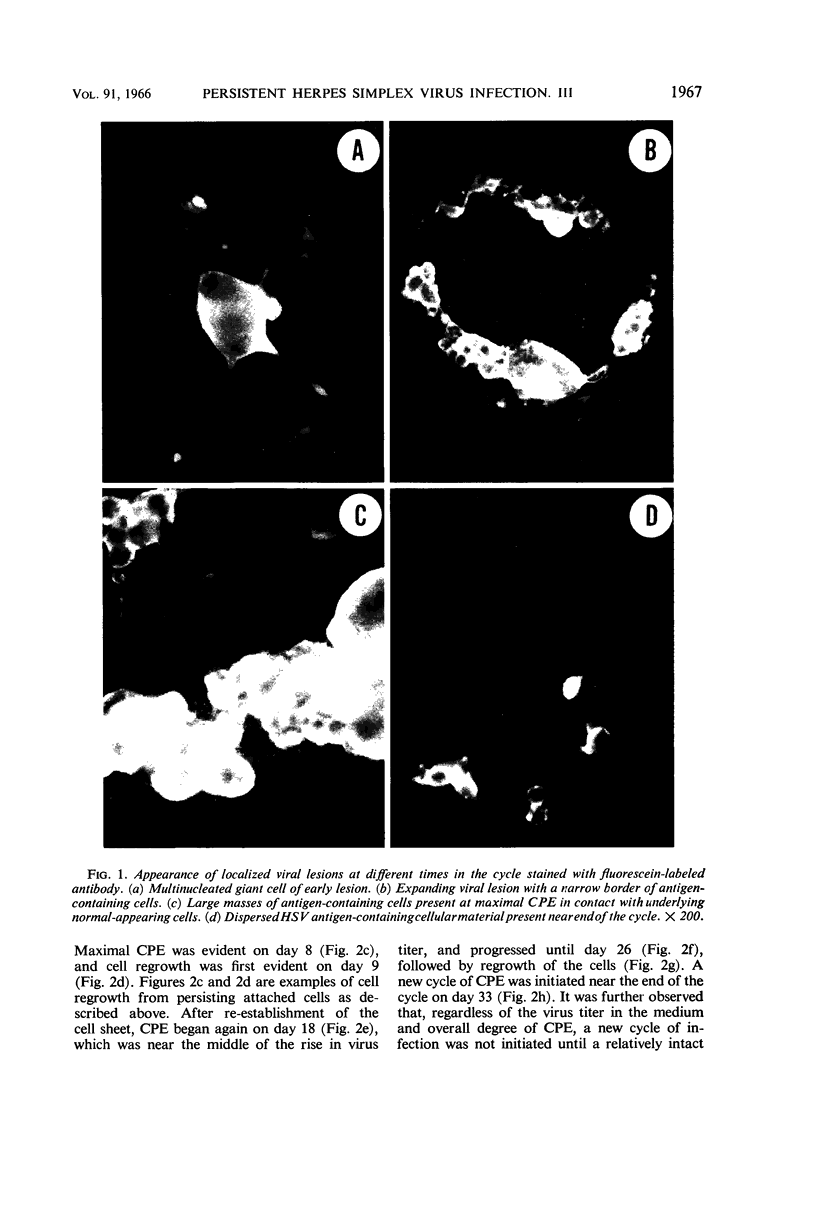
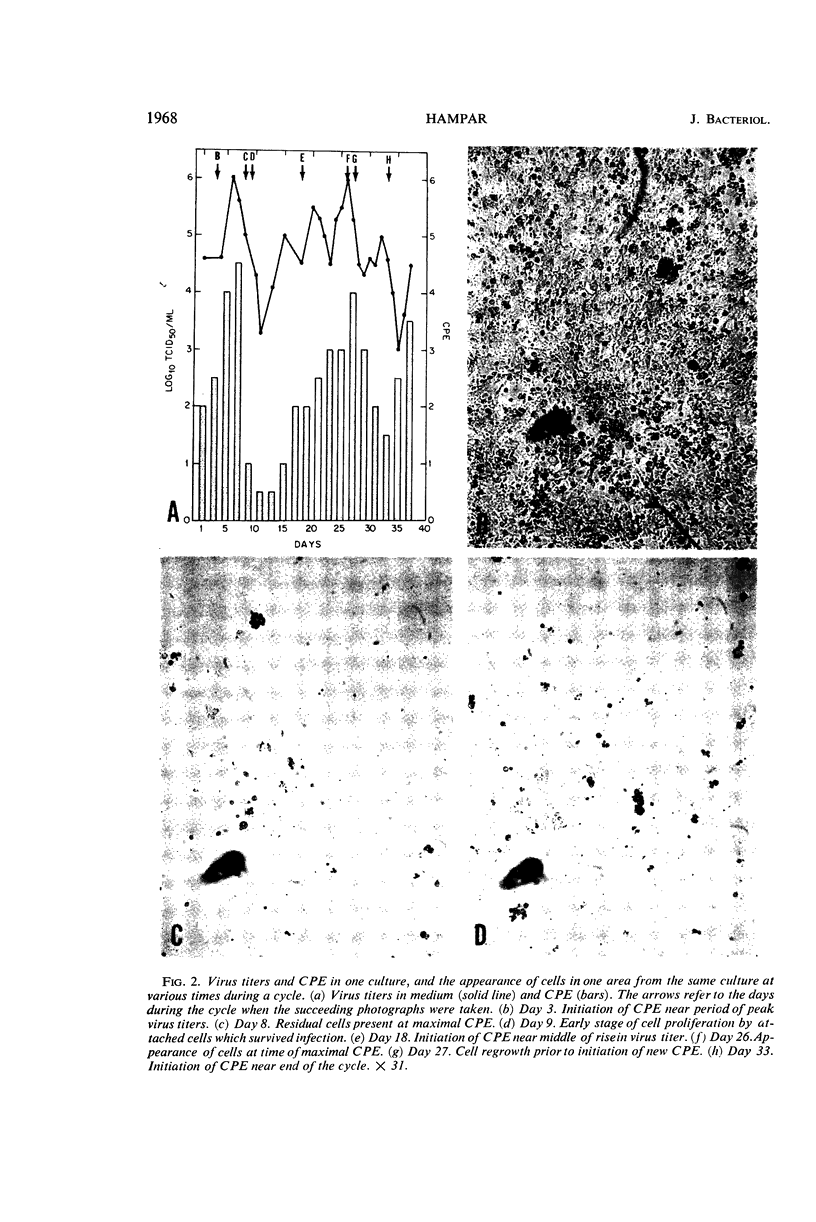
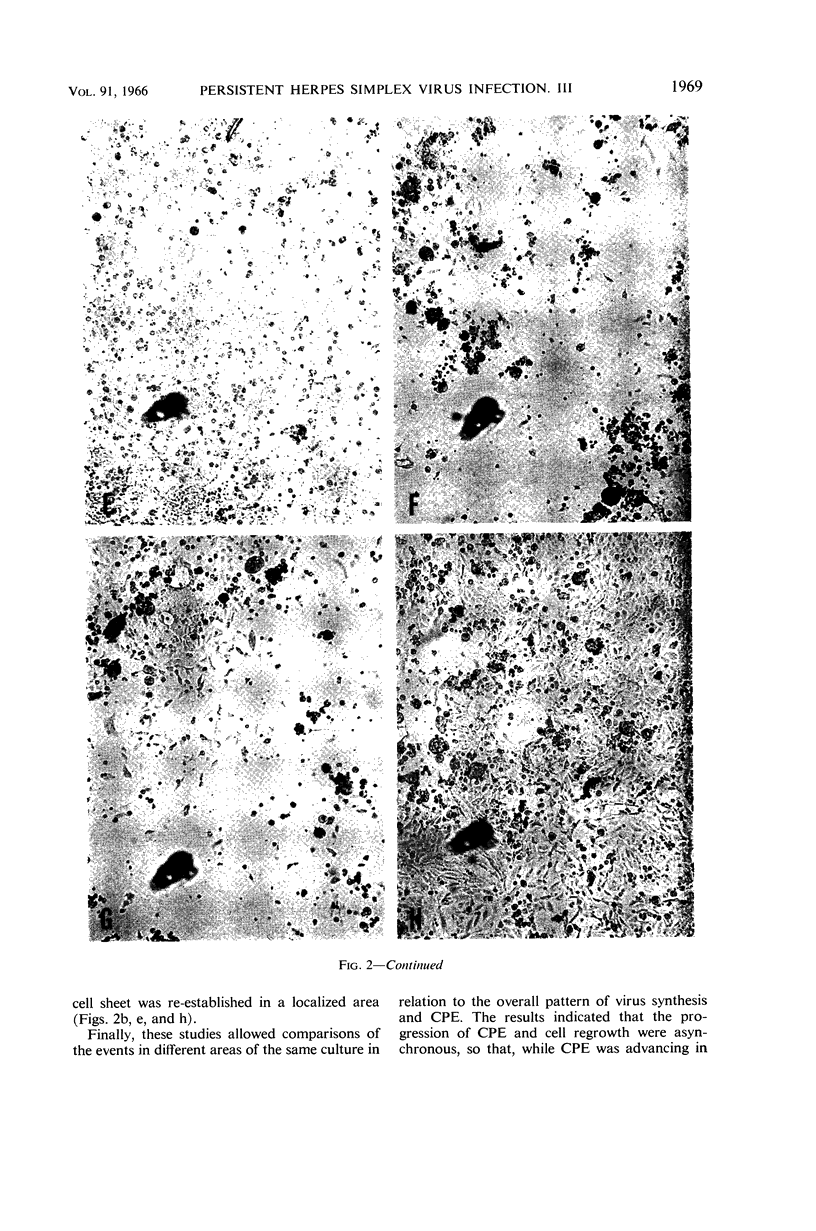
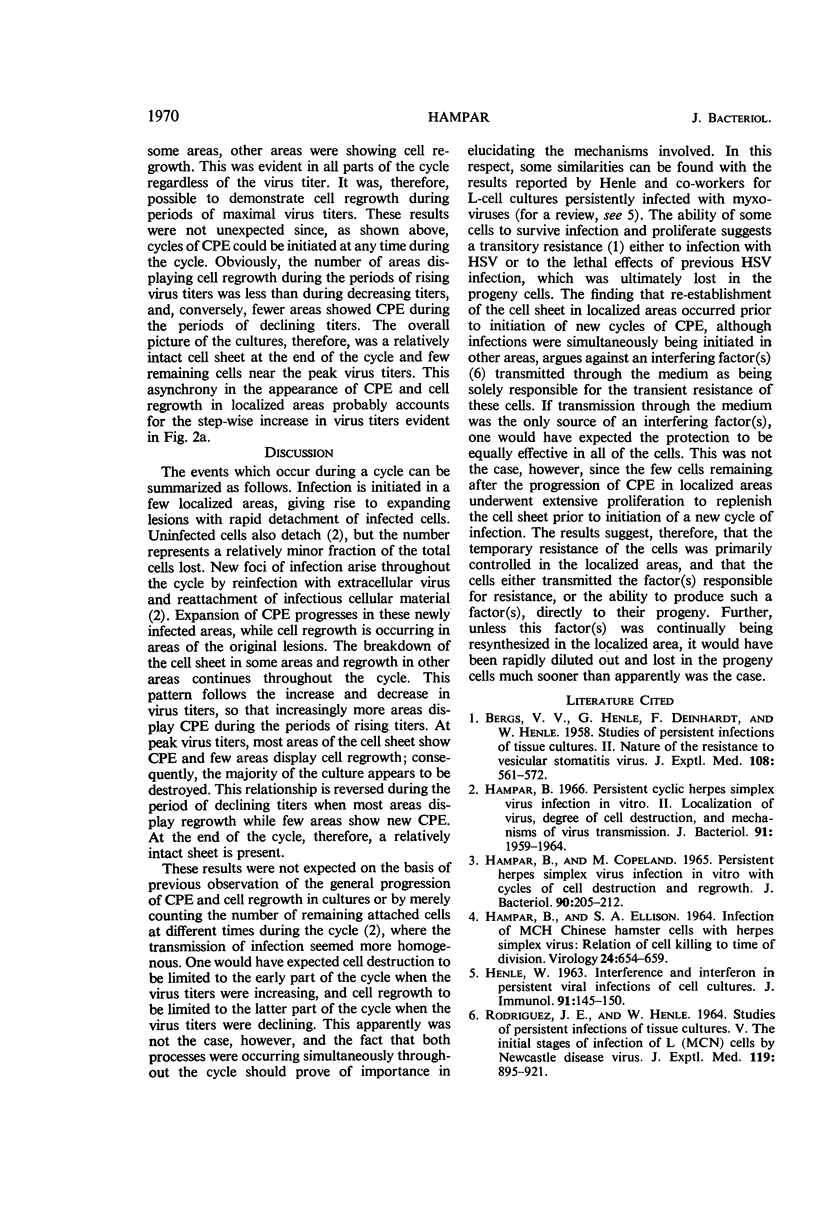
Images in this article
Selected References
These references are in PubMed. This may not be the complete list of references from this article.
- BERGS V. V., HENLE G., DEINHARDT F., HENLE W. Studies on persistent infections of tissue cultures. II. Nature of the resistance to vesicular stomatitis virus. J Exp Med. 1958 Oct 1;108(4):561–572. doi: 10.1084/jem.108.4.561. [DOI] [PMC free article] [PubMed] [Google Scholar]
- HAMPAR B., ELLISON S. A. INFECTION OF MCH CHINESE HAMSTER CELLS WITH HERPES SIMPLEX VIRUS: RELATION OF CELL KILLING TO TIME OF DIVISION. Virology. 1964 Dec;24:654–659. doi: 10.1016/0042-6822(64)90220-x. [DOI] [PubMed] [Google Scholar]
- HENLE W. INTERFERENCE AND INTERFERON IN PERSISTENT VIRAL INFECTIONS OF CELL CULTURES. J Immunol. 1963 Aug;91:145–150. [PubMed] [Google Scholar]
- Hampar B., Copeland M. L. Persistent Herpes Simplex Virus Infection In Vitro with Cycles of Cell Destruction and Regrowth. J Bacteriol. 1965 Jul;90(1):205–212. doi: 10.1128/jb.90.1.205-212.1965. [DOI] [PMC free article] [PubMed] [Google Scholar]
- Hampar B. Persistent cyclic herpes simplex virus infection in vitro. II. Localization of virus, degree of cell destruction, and mechanisms of virus transmission. J Bacteriol. 1966 May;91(5):1959–1964. doi: 10.1128/jb.91.5.1959-1964.1966. [DOI] [PMC free article] [PubMed] [Google Scholar]
- RODRIGUEZ J. E., HENLE W. STUDIES ON PERSISTENT INFECTIONS OF TISSUE CULTURES. V. THE INITIAL STAGES OF INFECTION OF L(MCN) CELLS BY NEWCASTLE DISEASE VIRUS. J Exp Med. 1964 Jan 1;119:895–921. doi: 10.1084/jem.119.6.895. [DOI] [PMC free article] [PubMed] [Google Scholar]



